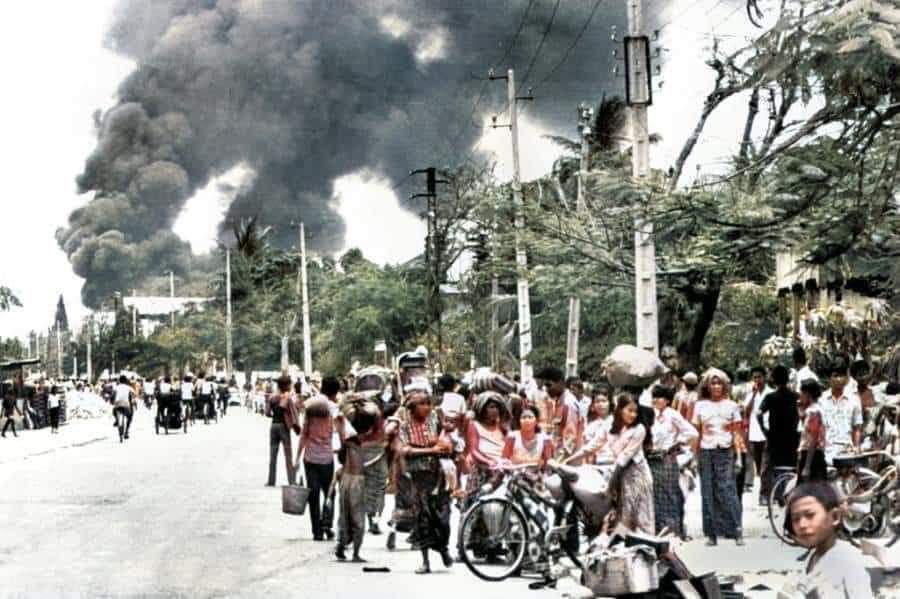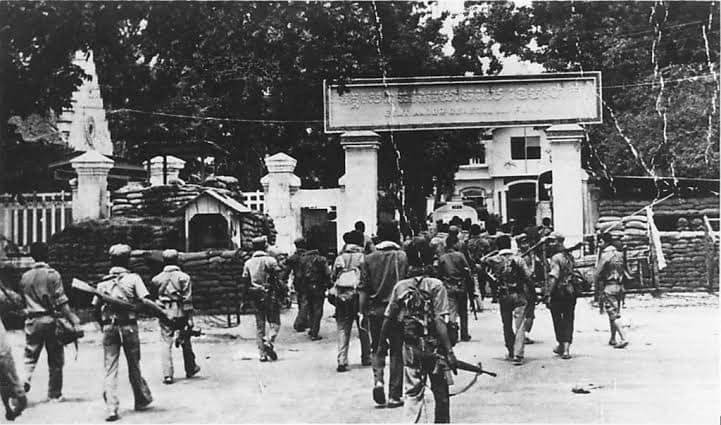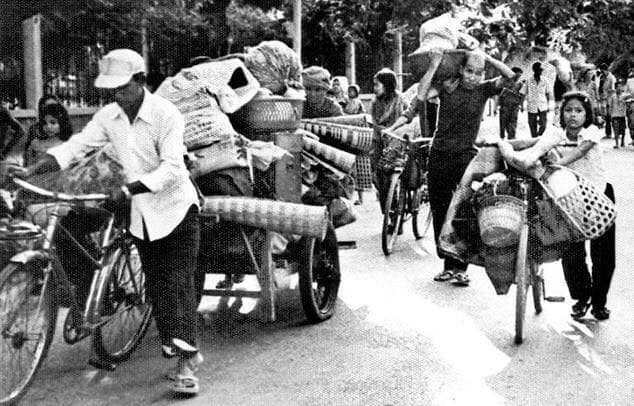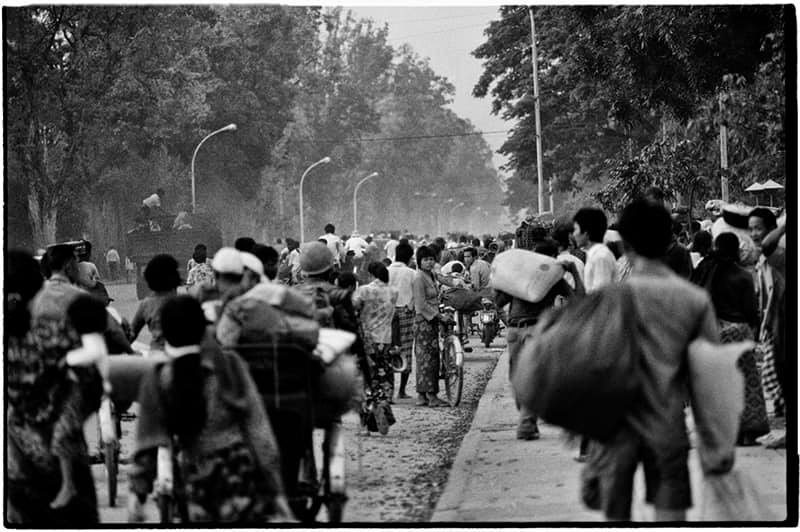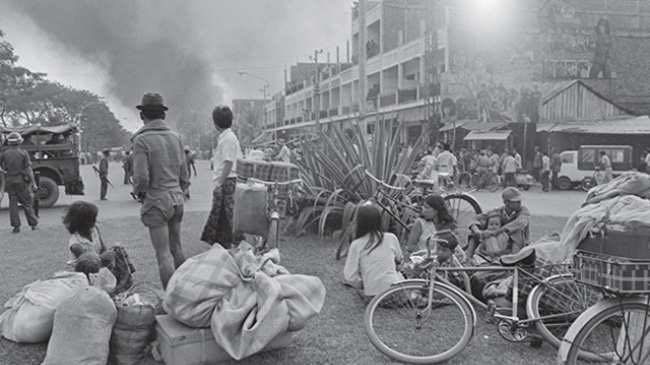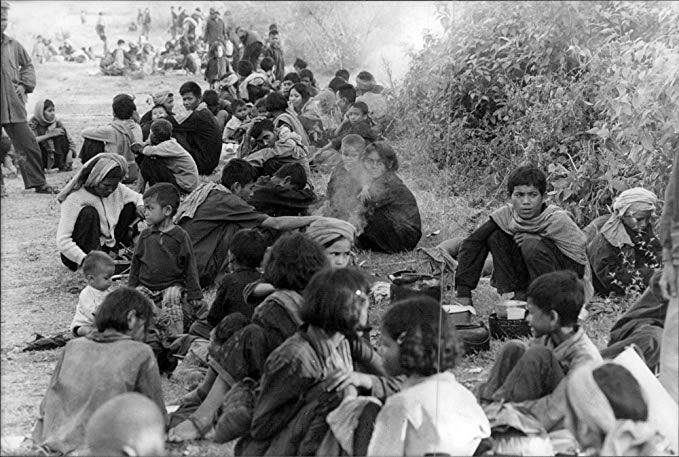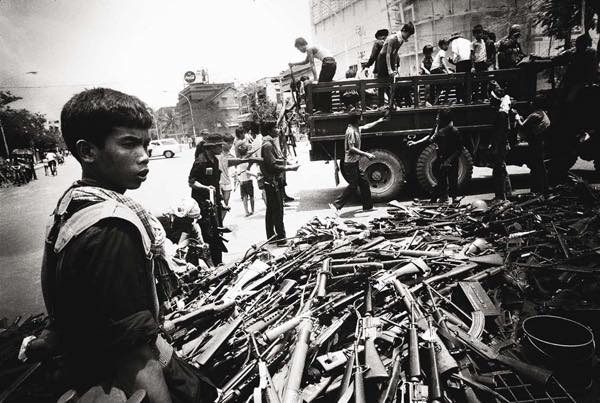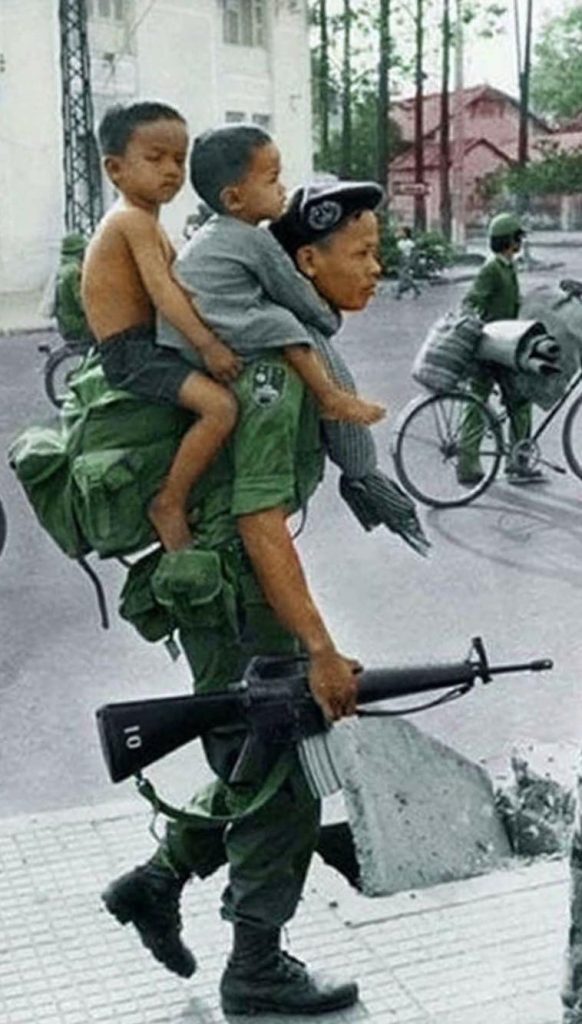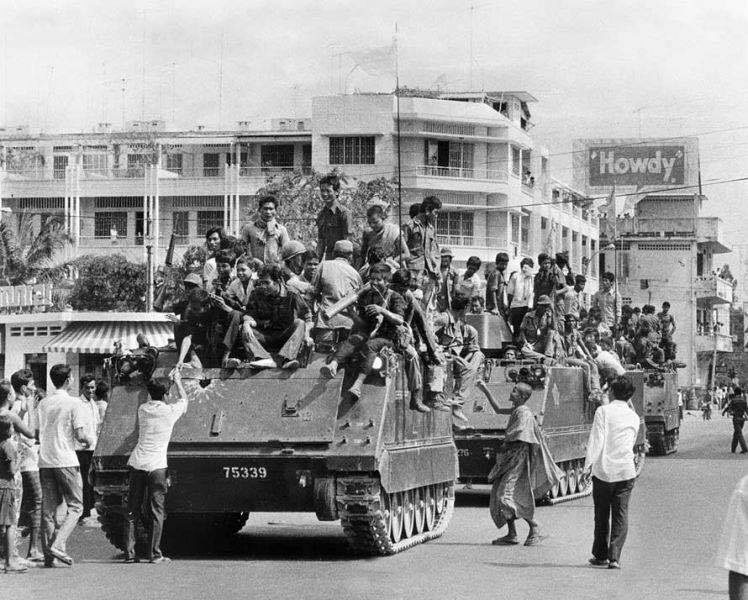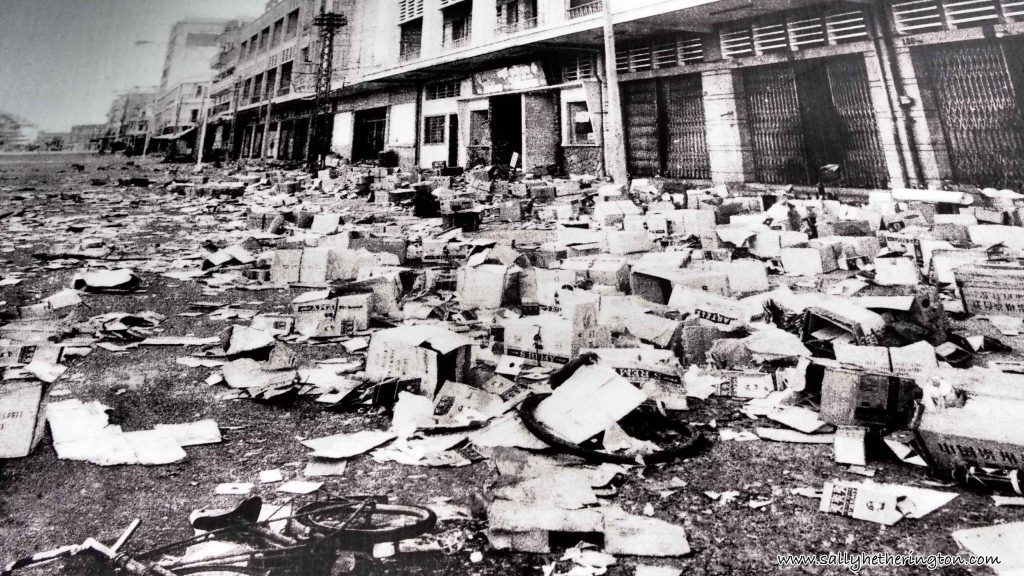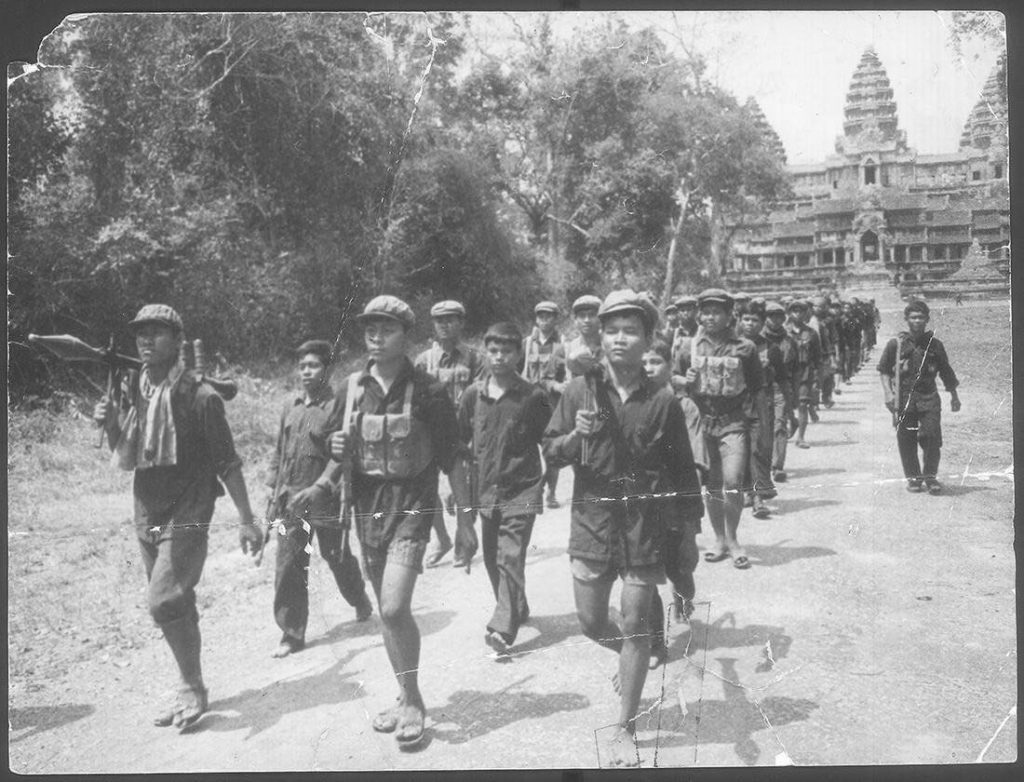Today marks the 45th anniversary (17 April 1975-17 April 2020) of the start of the genocidal regime of Democratic Kampuchea “the Khmer Rouge.”
On April 17, 1975, the Khmer Rouge began the forced relocation of people from Phnom Penh and other urban areas.
Khmer people living under the blood and tears of the ultra-Marxist regime suffered terribly, and millions of Cambodians died of hunger, torture, overwork, lack of medicine and treatment, and internal cleansing.
02:00, 17 April 1975: No peace offer had been accepted by the communist forces, so the Cabinet agreed members of the government to the north of Oddar Meanchey Province on the Thai by helicopter.
04:00: The members of the Government met in the garden in front of the Wat Botum Vaddey for evacuation, but the helicopters did not show up.
04:00: Heavy fighting in the north of the city around the main power station
05:30: Dawn was breaking and the Government members returned to Premier Long Boret’s house at and decided to resist to the death in Phnom Penh.
Around 06:00: Minister of Information, Thong Lim Huong, brought a cable just arrived from Peking advising that the peace appeal had been rejected by Sihanouk. At the same time they branded the seven members of the Supreme Committee as chief traitors, in addition to the seven who had taken power in 1970.
Around 06.00: FANK forces retreated along Monivong Boulevard into the city center. Admiral Vong Sarendy had returned to the naval base which was under attack by the Khmer Rouge. As Khmer Rouge forces entered the command post Sarendy committed suicide.
08:00 the rest of the Cabinet, the deputies and the senators left the session, leaving Long Boret and recently appointed leader Sak Sutsakhan. General Thach Reng arrived to plead with them to leave with him, as he still had his men of the Special Forces and seven UH-1 helicopters at his disposal at the Olympic Stadium.
About 08:30: Sak and his family boarded a helicopter and were flown out, as was KAF commander Ea Chhong. Meanwhile, Long Boret boarded another helicopter which failed to take off. Four helicopters flew to Kampong Thom to refuel.
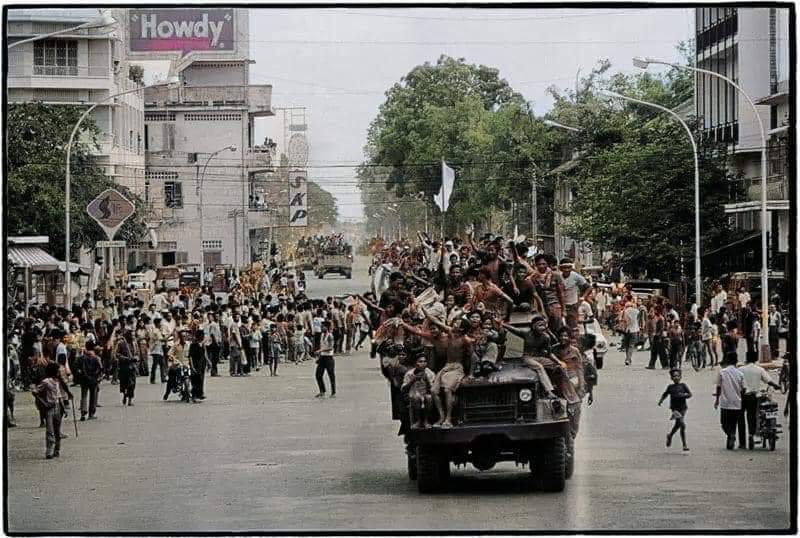
09:30: Establishing radio contact with Phnom Penh, Sak learned that the Khmer Rouge had penetrated into the General Staff Headquarters. General Mey Sichan addressed the nation and the troops in Sak’s name asking them to hoist the white flag as a sign of peace.
The Khmer Rouge began entering central Phnom Penh from all directions and stationed themselves at the major crossroads where they disarmed FANK soldiers and collected weapons. The disarmed soldiers were then marched to the Olympic Stadium where they were later executed. The Khmer Rouge held a press conference at the Ministry of Information where a number of prisoners, including Lon Non and Hem Keth Dara, were being held. A car carrying Long Boret arrived and he joined the prisoners.
Around 12.00: The Khmer Rouge ordered the evacuation of the city for three days, evicting expatriates and Cambodians from the Hotel Le Phnom which the Red Cross had sought to establish as a neutral zone, and emptying the city’s hospitals. Approximately 800 expatriates and 600 Cambodians took refuge at the French Embassy.
13.30: Sak’s helicopter arrived at Oddar Meanchey, and any chance of reestablishing the Government evaporated and the assembled officers decided to seek exile in Thailand.
Koy Thuon, a Khmer Rouge deputy front commander, organized the “Committee for Wiping Out Enemies” at the Hotel Monorom. Its first action was to order the immediate execution of Lon Nol and other leading government figures. Captured FANK officers were taken to the Hotel Monoram to write their biographies and then to the Olympic Stadium, where they were executed
